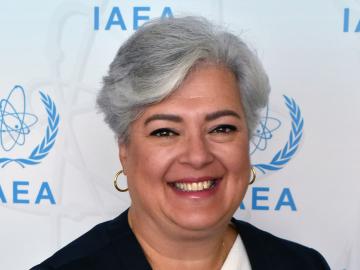Filter News
Area of Research
- (-) National Security (61)
- Advanced Manufacturing (22)
- Biological Systems (5)
- Biology and Environment (151)
- Biology and Soft Matter (4)
- Building Technologies (10)
- Chemical and Engineering Materials (4)
- Chemistry and Physics at Interfaces (7)
- Clean Energy (360)
- Climate and Environmental Systems (11)
- Computational Biology (2)
- Computational Chemistry (5)
- Computational Engineering (4)
- Computer Science (14)
- Data (1)
- Earth Sciences (1)
- Electricity and Smart Grid (3)
- Energy Frontier Research Centers (7)
- Energy Sciences (4)
- Fossil Energy (1)
- Fuel Cycle Science and Technology (2)
- Functional Materials for Energy (10)
- Fusion and Fission (47)
- Fusion Energy (15)
- Geographic Information Science and Technology (1)
- Isotope Development and Production (1)
- Isotopes (29)
- Materials (261)
- Materials Characterization (2)
- Materials for Computing (27)
- Materials Synthesis from Atoms to Systems (8)
- Materials Under Extremes (8)
- Mathematics (1)
- Neutron Data Analysis and Visualization (4)
- Neutron Science (118)
- Nuclear Science and Technology (53)
- Nuclear Systems Modeling, Simulation and Validation (2)
- Quantum Condensed Matter (3)
- Quantum information Science (8)
- Renewable Energy (4)
- Sensors and Controls (4)
- Supercomputing (213)
- Transportation Systems (8)
News Type
News Topics
- 3-D Printing/Advanced Manufacturing (1)
- Advanced Reactors (1)
- Artificial Intelligence (6)
- Big Data (6)
- Bioenergy (3)
- Biology (4)
- Biomedical (1)
- Biotechnology (1)
- Buildings (1)
- Climate Change (5)
- Computer Science (12)
- Coronavirus (2)
- Cybersecurity (11)
- Decarbonization (2)
- Energy Storage (1)
- Environment (4)
- Fusion (1)
- Grid (5)
- High-Performance Computing (3)
- Machine Learning (8)
- Materials (1)
- Materials Science (3)
- Nanotechnology (1)
- National Security (26)
- Neutron Science (4)
- Nuclear Energy (4)
- Partnerships (1)
- Physics (1)
- Quantum Science (1)
- Security (7)
- Simulation (1)
- Summit (2)
- Sustainable Energy (2)
- Transportation (1)
Media Contacts

Nine student physicists and engineers from the #1-ranked Nuclear Engineering and Radiological Sciences Program at the University of Michigan, or UM, attended a scintillation detector workshop at Oak Ridge National Laboratory Oct. 10-13.

Having lived on three continents spanning the world’s four hemispheres, Philipe Ambrozio Dias understands the difficulties of moving to a new place.

In human security research, Thomaz Carvalhaes says, there are typically two perspectives: technocentric and human centric. Rather than pick just one for his work, Carvalhaes uses data from both perspectives to understand how technology impacts the lives of people.

Though Scott Stewart recently received an Early Career Award from the Institute of Nuclear Material Management, he is regarded as a seasoned professional in the nuclear field with over 10 years of experience.

Countries around the world have unique languages, cultures, food, entertainment and governments. Yet, more than 170 countries are finding common ground in an unlikely field: nuclear material and science.

When Matt McCarthy saw an opportunity for a young career scientist to influence public policy, he eagerly raised his hand.

Cameras see the world differently than humans. Resolution, equipment, lighting, distance and atmospheric conditions can impact how a person interprets objects on a photo.

When the COVID-19 pandemic stunned the world in 2020, researchers at ORNL wondered how they could extend their support and help

Though Nell Barber wasn’t sure what her future held after graduating with a bachelor’s degree in psychology, she now uses her interest in human behavior to design systems that leverage machine learning algorithms to identify faces in a crowd.

In front of family and friends, Lt. Col. Jessica Critcher and Maj. Micah McCracken gave their final report on their eye-opening year as ORNL military fellows.




